In hindsight, it’s easy to spot the tech trends that shape today’s world. In the moment, though, sometimes even the most respected minds don’t always recognize a new invention’s potential.
Here are ten of our favorite examples of significant inventions and the people who totally missed the boat with their predictions.
- Printing Press (15thcentury)
Before the printing press was invented in the mid-1400s by Johannes Gutenberg, scholars and clergymen painstakingly transcribed books by hand. Gutenberg’s printing press “reigned supreme for 300 years” into the late 18th century.
But don’t tell that to Abbot Johannes Trithemius, who wrote in 1492 in his work In Praise of Scribes that anyone who gave up copying by hand for the printing press was a man who “only tries to conceal his own laziness.” Trithemius must have been lazy too, as he actually had In Praise of Scribes printed to boost readership!
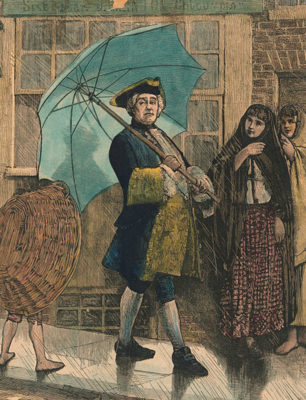 Umbrella (18thcentury)
Umbrella (18thcentury)
Before the umbrella became a rainy day staple in London in the late 18th century, it was considered women’s fashion. One advertisemt ridiculed men who used umbrellas to stay dry by saying that they “shall be welcome to the maid’s pattens [high-heeled shoes].”
But, in the 1750s, Jonas Hanway touted his umbrella proudly in rainy London until his death in 1786, despite public shaming and even violence against him. Soon afterwards, the umbrella was adopted as a must-have for rainy days.
- Telephone (mid 19thcentury)
Alexander Graham Bell patented the telephone in 1876, with its success quickly making him rich.
And history quickly made a fool of William Orton, President of Western Union—which at the time had a monopoly on the telegram industry—when he said in 1876: “This ‘telephone’ has too many shortcomings to be seriously considered as a means of communication.” Should we call and tell him how wrong he was?
- Light Bulb (1878)
Thomas Edison’s first working light bulb lit up the world in 1878, and in the same year the British Parliament concluded that Edison’s light bulb was “good enough for our Transatlantic friends… but unworthy of the attention of practical or scientific men.”
The British soon saw the light, of course.
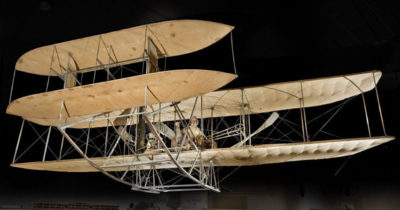 Airplanes for Military Use (1908)
Airplanes for Military Use (1908)
The U.S. Government contracted the Wright brothers to build a military reconnaissance plane in 1908, five years after their historic flight. That didn’t stop Ferdinand Foch, French Allied Supreme Commander in WWI to declare that “Airplanes are interesting toys, but of no military value.”
In WWI, both sides used planes to fight, drop bombs, spy, and deliver supplies. Not bad for a toy.
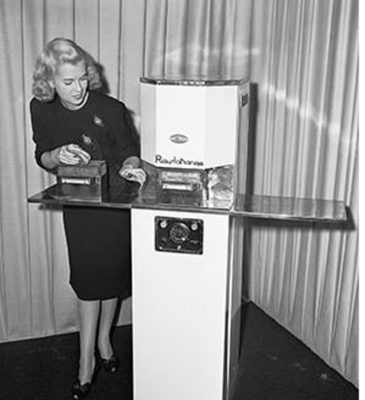 Microwave (1960)
Microwave (1960)
Percy Spencer first invented the microwave in 1947 (accidentally), but it wasn’t until 20 years later that it caught on domestically. The invention of the microwave oven didn’t get a “warm” welcome from everyone, though: Consumers Union was concerned that microwaves’ radiation emission levels were unsafe.
Some people still believe this today; just keep the tin foil out of the microwave.
- Internet (1992)
The “World Wide Web” as we know it popped up in 1992. It was a costly infrastructure to produce, which led Robert Metcalfe (the co-inventor of Ethernet) to state in December 1995, “I predict the Internet will soon go spectacularly supernova and in 1996 catastrophically collapse.”
And yet, here we are.
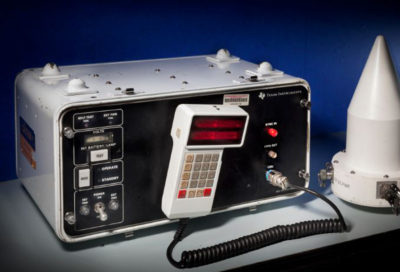 GPS (1980s)
GPS (1980s)
The GPS (Global Positioning System) originated in the military, and the US government hesitated to make it available for civilian use. “While there were wide needs for accurate navigation in military and civilian sectors, almost none of those was seen as justification for the billions of dollars it would cost in research, development, deployment, and operation for a constellation of navigation satellites.”
We’ve come a long Waze since then.
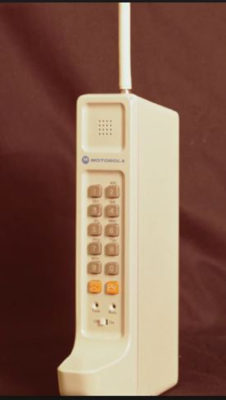 Cell Phone (1980s through early 2000s)
Cell Phone (1980s through early 2000s)
Cell phones have been around since the 1980s, but it wasn’t until the iPhone in 2007 that they became a near-necessity. Still, iPhones got a lukewarm response when they first came out:
“The Futurist” wrote in 2007: “That virtual keyboard will be about as useful for tapping out emails and text messages as a rotary phone.” Bloomberg writer Matthew Lynn wrote the same year: “[Competition] won’t come from the iPhone. Apple will sell a few to its fans, but it won’t make a long-term mark on the industry.”
Not only were they both spectacularly wrong, but iPhones (and smartphones in general) have revolutionized countless other industries. Still, Steve Jobs probably couldn’t have predicted how simple his phones would make things like land surveying, could he?
 Digital Camera (1989)
Digital Camera (1989)
Even though the Eastman Kodak company developed the first digital camera in 1975, Kodak didn’t believe that people would want a digital camera since film was so popular. By 1989, Steven Sasson and a colleague, Robert Hills, shrunk the digital camera from eight pounds to something resembling today’s portable cameras. Kodak’s marketing department told Sasson that they didn’t want to sell the camera because it would take away from Kodak’s film sales.
Now, film is a low-volume novelty, and thanks to digital cameras in smartphones, there were an estimated 1.2 trillion digital photos taken in 2017. With all of those photos, there’s little wonder why people are clamoring for photo organizer apps.
Predicting Today’s Tech Trends
The tough part about correctly identifying tech trends is understanding how people deal with change. A profession like land surveying, which has existed for thousands of years, has a long history with technology and can be slow to change.
At Zia, we’re confident in predicting that smartphones, with their cameras and GPS, are an integral part of the profession moving forward. Try out our new app to see how it’s revolutionizing the work of land surveyors.
